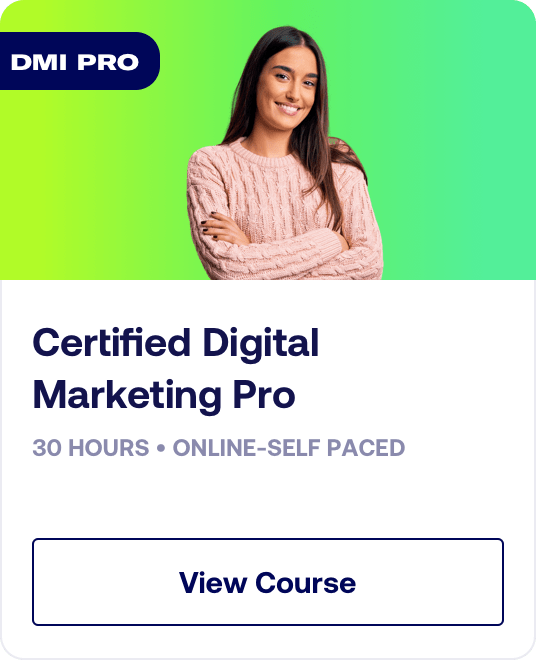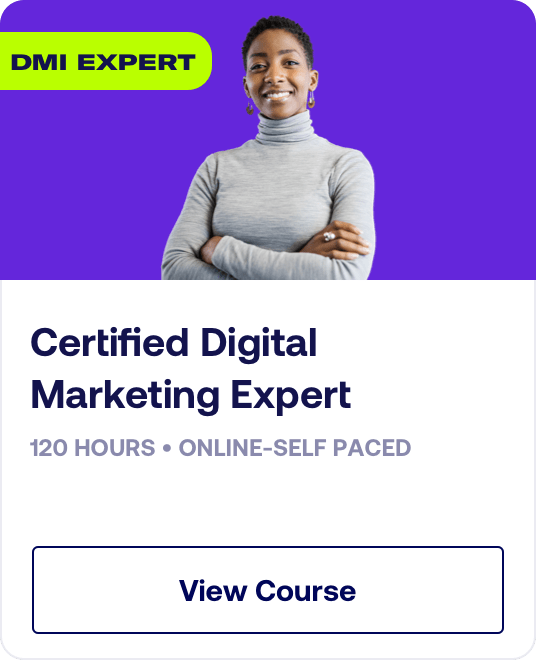Digital Marketing - Study Notes:
Mobile-first approach
When targeting consumers in almost every industry, adopting a mobile-first approach is essential. A mobile-first approach simply means that you assume that a mobile device is your first potential point of interaction with the consumer. And you create an experience that aims to draw people into the purchase funnel from an early-stage mobile interaction, because it’s the device people often use to get their information from the start of their customer journey.
A mobile-first approach typically results in better organic search rankings and SEO. And studies have shown that there’s a direct correlation between higher mobile traffic, which may not directly convert, and overall site conversions. This is because many people begin their research on a mobile device and even if they complete the journey on a desktop device, the first interaction began on mobile. So, if they start researching on their phone, they’re far more likely to go ahead and convert.
You also need to consider mobile consumer behavior. For example, people can find it difficult to enter their credit card details on the small screen of a mobile device so your mobile experience needs to take account of the device size and its functional capabilities too.
Next, let’s consider mobile apps. Unlike the mobile web, mobile apps often use tokenization, which enables them to save profile and credit card details. This makes it much easier for consumers to convert when using a mobile app, which in turn can deliver significant revenue. For example, you can order and easily pay within the Uber app when you need a driver.
Now, in a world of always-on connectivity and 360 consumers, where people are constantly online and engaging with brands and organizations throughout their day across a variety of channels, you can see why mobile has become relevant to every stage of the purchase journey, from awareness to consideration and then from conversion to retention. So, this means that marketers’ mindset must be a mobile-first strategy.
The mobile purchase funnel
Now let’s look at how the mobile purchase funnel can be optimized. Rather than starting from scratch with a new funnel, you can transform your existing funnel into a mobile funnel with a few modifications. Bear in mind that your existing funnel will require some optimization to make it work effectively for mobile.
- Your mobile site or app must be easy to use: It has to have ease of access.
- It also must have simplified purchase checkouts: Don’t make it too complicated to get through lots of details.
- Tokenization helps: Are your credit card details saved? Are your profile details saved?
- Consider things like shareability: Can your experience using the mobile app and product choices be shared among your social peers on your native mobile apps, and so on?
- Suitability for a mobile screen: Mobile screens are quite small. So, can people see the checkout clearly? Is the navigation easy, when using touchscreens and gestures.
Now, of course, the ultimate goal is to make it as simple as possible for the mobile user to navigate through their purchase journey.
Key mobile concerns
It’s always best to minimize what’s called friction in the journey. Friction refers to things that get in the way of the customer converting. Mobile consumers often have several concerns when deciding whether to convert.
These include issues such as the following:
- Security: Customers expect to be protected against cyber-attacks and fraud. You must provide assurances on how you’re protecting customers’ personal data.
- Site speed: Downloading large images and heavy sites on a 3G or a 4G network can eat up people’s credit and cause them to bounce.
- And then finally, there is the difficulty in submitting lots of details: Remember the limitations of a mobile touchscreen. As a rule, you should only ask for the details you really need. For example, lots of sites ask for details like address and date of birth, when they don’t need it. So, if you’re asking for things like that, think, “Do I actually need to collect this information to proceed?” Because if not, it’s just friction.
One expert tip here is to use what are called field-specific keypads, like the number keypad or the email keypad, to make it easier for people to complete online forms. For example, on your mobile app, the keypad might change to a number keypad when people are entering their phone number, or to an email keypad when they have to enter an email address. This makes the journey somewhat easier for consumers, and reduces friction.
Mobile marketing advantages
Moving on from a purely digital world, let’s focus next on the advantages of mobile for marketing a business with a physical presence.
So, one of the most impactful marketing tactics associated with mobile devices for local retailers and service businesses is Google Local Services. This involves using features such as Google Maps, where consumers will navigate to your store using their mobile phone. By taking advantage of Google Local Services, you can add your business or service to the local directory and show up on Google Maps. This is a great way to capture local customers.
Another effective tactic is using redeemable in-store promotions. For example, if someone checks into a store with a Facebook account, they may be offered a free coffee, or something similar. This brings an online experience to an offline transaction. So, you’re getting direct revenue, commercial activity, and data via the online-offline interface.
Also, keep in mind that consumer buying patterns and the pace of adoption of mobile transactions and shopping changed significantly in western markets following Covid-19 restrictions. Today, people expect a seamless mobile experience for purchasing items on their phone and on social apps. It’s no longer a pure browsing device with purchases happening on desktops at a later stage.
Mobile transactions can actually be a lot faster and more spontaneous, so the experience needs to allow people to interact easily on their phone with features such as:
- Simple navigation
- Social shops
- Shorter checkouts
- Prepopulated payment methods like Apple Pay, Google Pay, Meta Pay, and so on.
Finally, it’s important for a marketing strategist to remember that the true value of mobile is the ongoing connectivity that brands can have with their audience. After all, you can connect with your consumer at any point during the day using mobile technology.
From a strategy perspective, think about how you can actually add value to the consumer’s day by giving them, for example, map locations, interesting content, or promotions that are actually relevant to the physical location of that mobile user. These are key opportunities that marketing strategists should be thinking about when doing any kind of mobile activity through apps, push notifications, email, and mobile websites.
Cathal Melinn
Cathal Melinn is a well-known Digital Marketing Director, commercial analyst, and eommerce specialist with over 15 years’ experience.
Cathal is a respected international conference speaker, course lecturer, and digital trainer. He specializes in driving complete understanding from students across a number of digital marketing disciplines including: paid and organic search (PPC and SEO), analytics, strategy and planning, social media, reporting, and optimization. Cathal works with digital professionals in over 80 countries and teaches at all levels of experience from beginner to advanced.
Alongside his training and course work, Cathal runs his own digital marketing agency and is considered an analytics and revenue-generating guru - at enterprise level. He has extensive local and international experience working with top B2B and B2C brands across multiple industries.
Over his career, Cathal has worked client-side too, with digital marketing agencies and media owners, for brands including HSBC, Amazon, Apple, Red Bull, Dell, Vodafone, Compare the Market, Aer Lingus, and Expedia.
He can be reached on LinkedIn here.

By the end of this topic, you should be able to:
- Critically assess the digital channel mix
- Systematically analyse tactics and techniques used for demand generation
- Critically evaluate the impact of outbound and inbound marketing on demand generation




